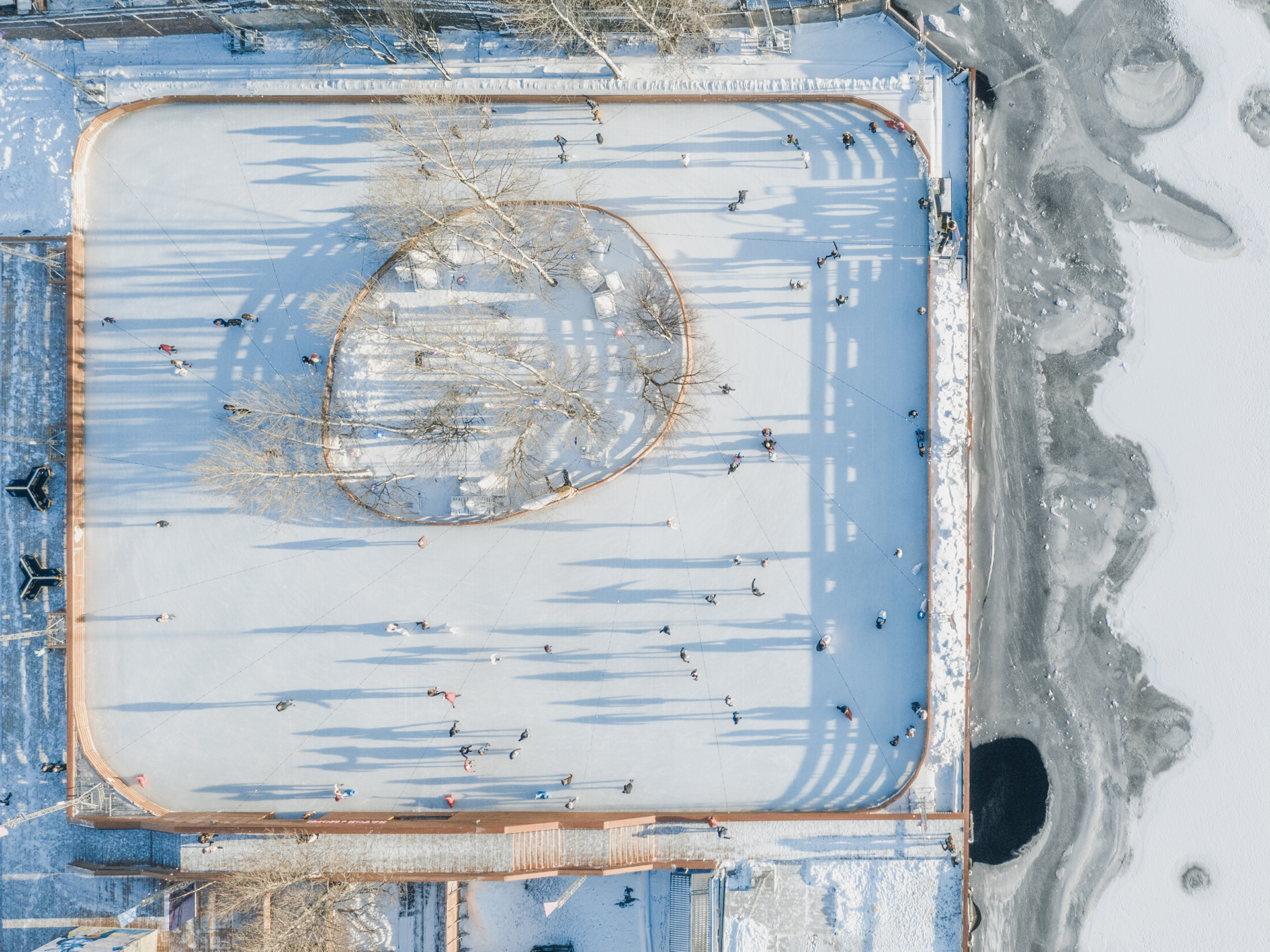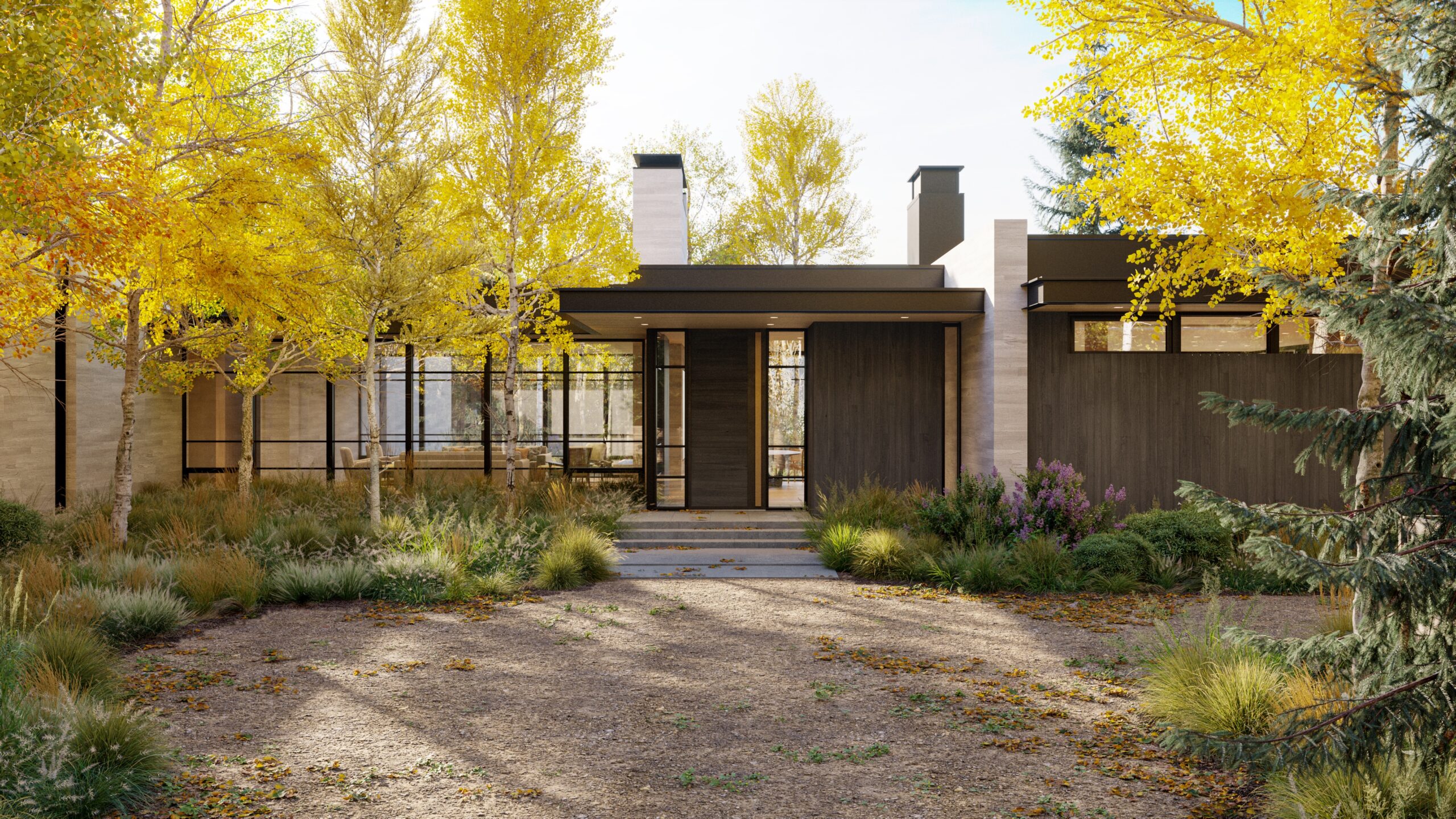Call for entries: The 14th Architizer A+Awards celebrates architecture's new era of craft. Apply for publication online and in print by submitting your projects before the Final Entry Deadline on January 30th!
Form shapes how we experience architecture. From walls and floors to roofs and windows, a building’s formal language guides us through architecture while informing views, light and comfort. As one of the most iconic forms, cones have been found in buildings and cultures around the world. Usually, a structure’s roof rises to a point, cones and conical shapes have also been used in interior atriums, walls, and the entire building massing. Today, this form can be seen in residential, commercial and cultural projects worldwide.
While cones may seem whimsical, they are also functional. The reason they are often used in roofs is that the pitch can shed water and provide protection from the elements while also creating an uplifting internal space. This shape shares qualities found in other roofs, such as hip roofs, shed roofs, and gable roofs. Showcasing conical architecture and iconic forms, the following projects explore what this shape looks like in today’s architecture. In turn, the projects are as playful and sculptural as they are inviting and inspiring.
Bumpers Oast
By ACME, Kent, England, United Kingdom
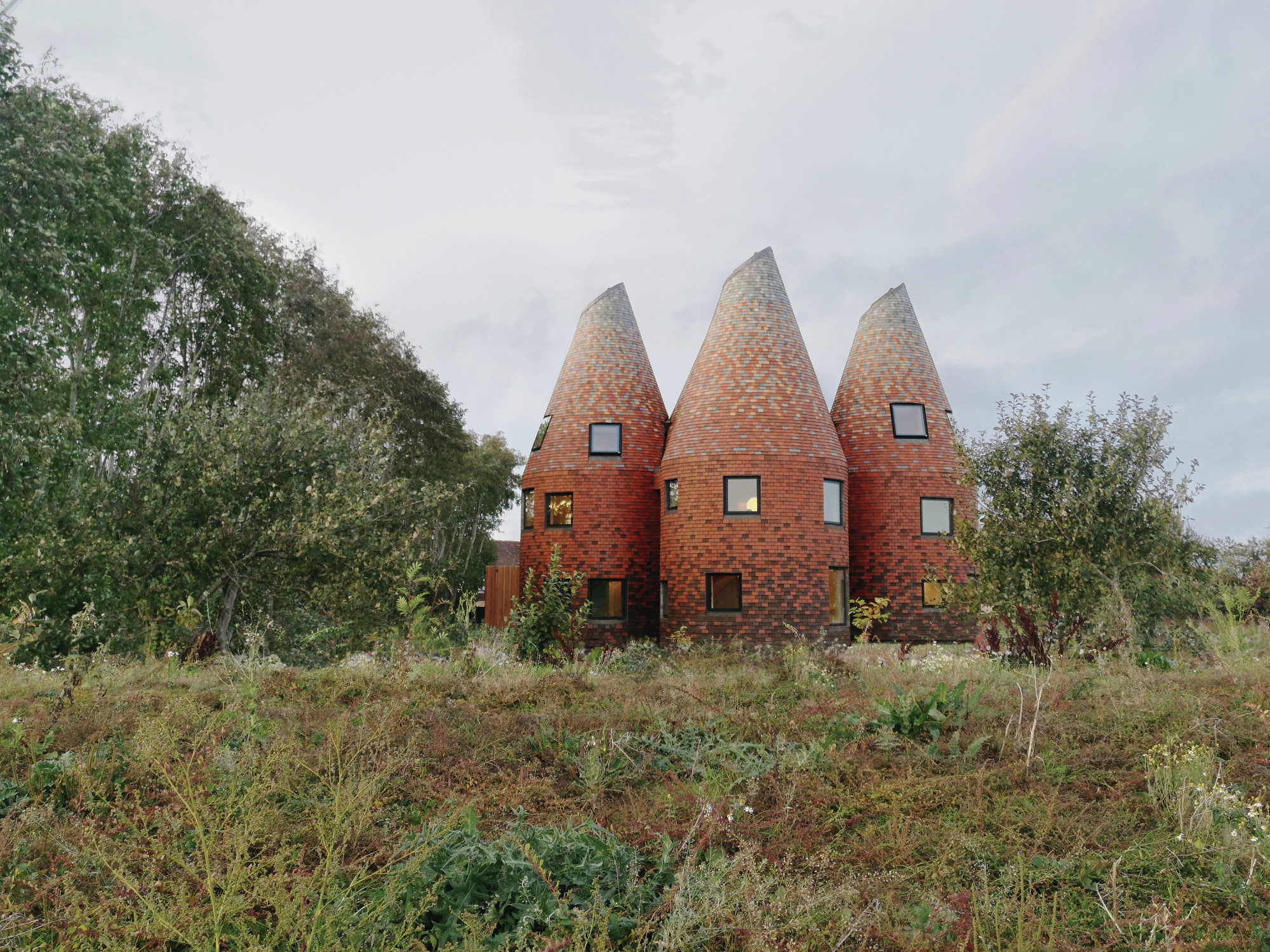
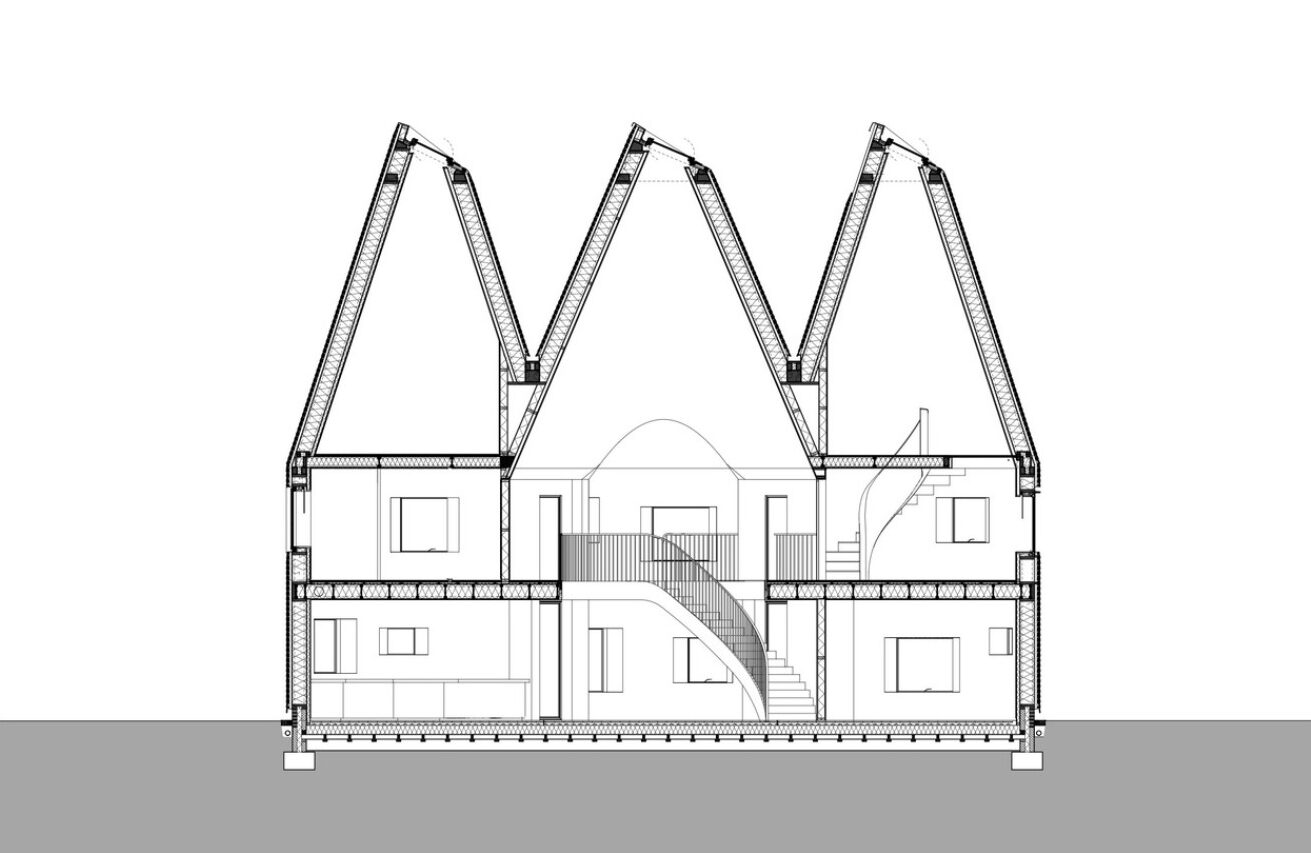 Designed to reinterpret history, this is an iconic new home in Kent. The area is characterized by oast houses that were used to dry hops as part of the beer-brewing process. This new house has been designed as a 21st century interpretation of the formal language of Kentish architecture. Five towers are built slightly apart from each other, creating inward-looking spaces in each tower and a more outward-looking central space opening out into the surrounding apple orchard.
Designed to reinterpret history, this is an iconic new home in Kent. The area is characterized by oast houses that were used to dry hops as part of the beer-brewing process. This new house has been designed as a 21st century interpretation of the formal language of Kentish architecture. Five towers are built slightly apart from each other, creating inward-looking spaces in each tower and a more outward-looking central space opening out into the surrounding apple orchard.
Each of the towers houses private functions such as bathrooms, bedrooms and service spaces, and framed window openings allow for selective views out. The centre of the house is a triple-height living space, visually open to the garden and towards each of the four towers, forming the heart of the house.
Library Delft University of Technology
By Mecanoo, Delft, Netherlands

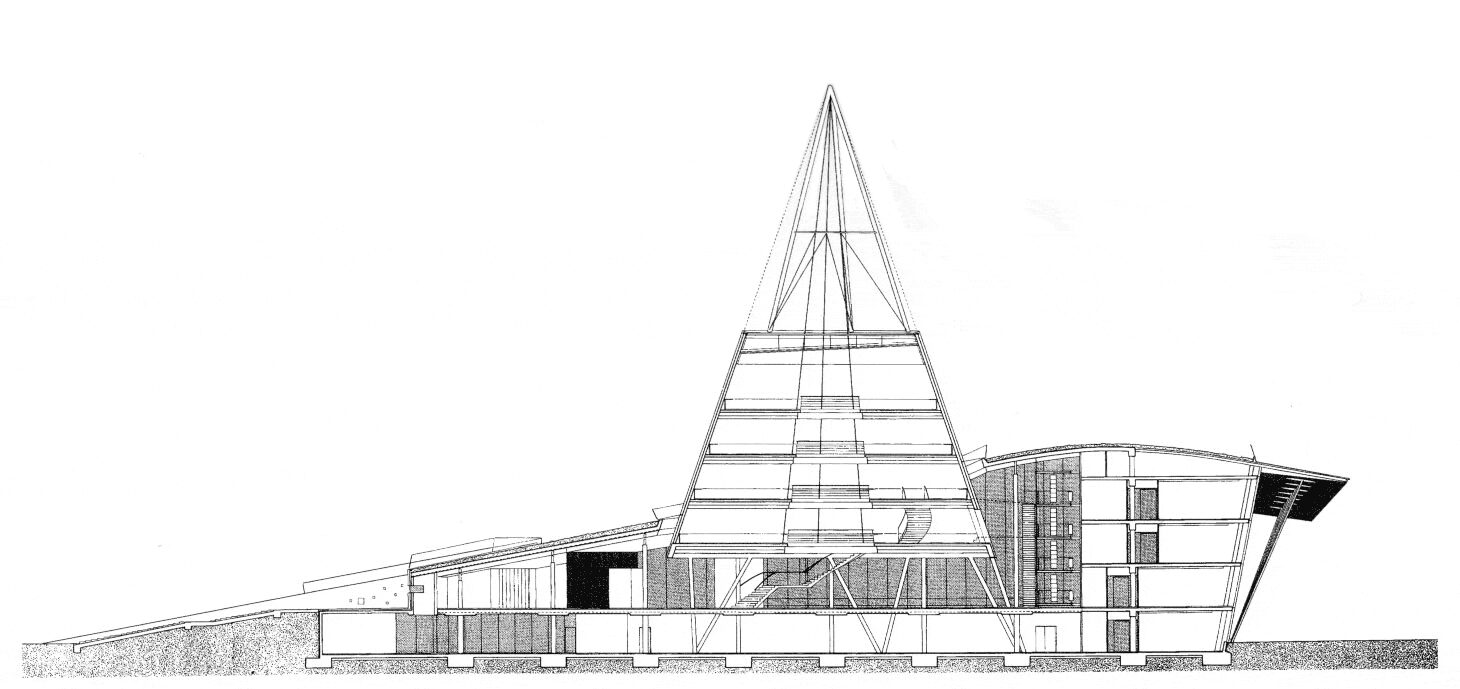 For Delft University of Technology (TU Delft), Mecanoo set out to design a library that would be the heart of the university and give a face to a campus the size of a city district. A lawn opposite the Brutalist concrete auditorium is tilted at one point; the library slides into the resulting space underneath. A cone, the symbol of technical engineering, pierces the lawn and library, attaching them like a pushpin.
For Delft University of Technology (TU Delft), Mecanoo set out to design a library that would be the heart of the university and give a face to a campus the size of a city district. A lawn opposite the Brutalist concrete auditorium is tilted at one point; the library slides into the resulting space underneath. A cone, the symbol of technical engineering, pierces the lawn and library, attaching them like a pushpin.
Landscape, library and auditorium form a new unity becoming the preferred meeting place on the TU Delft international campus. Daylight enters the building through the climate-controlled glass facades, as well as through the cone whose base forms the focal point of the central space. Moreover, the cone shapes different reading rooms on the upper floors.
PokoPoko Clubhouse
By Klein Dytham architecture, Nasu, Japan
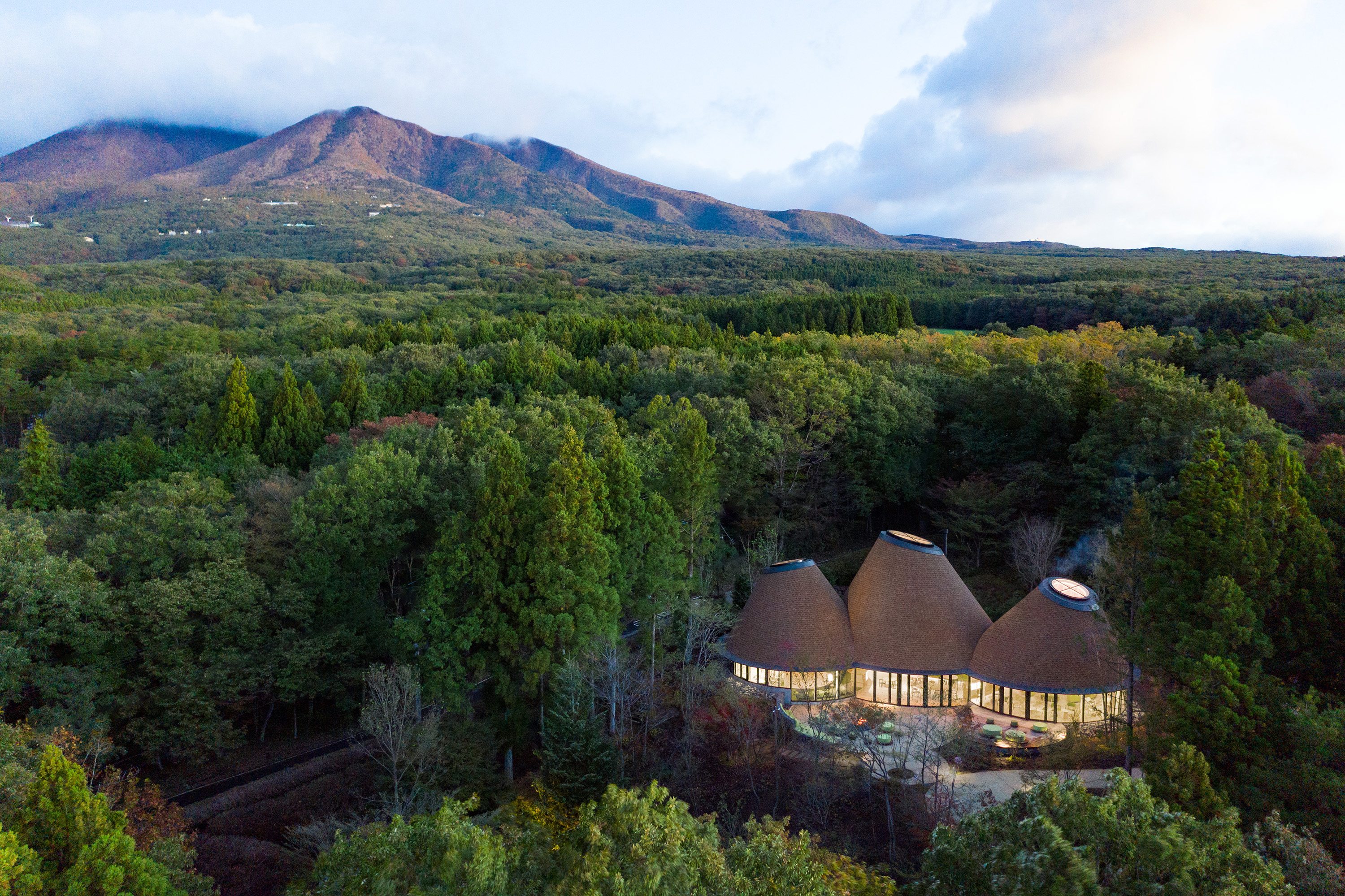
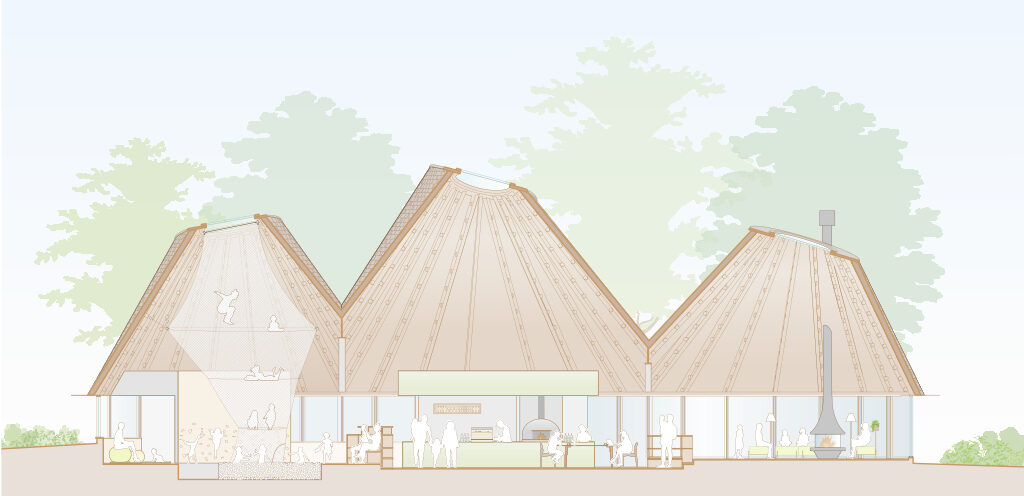 For the PokoPoko Clubhouse, the name is derived from the Japanese onomatopoeic term “poko poko,” meaning to stick out. Like the team describes, like a folkloric landmark, it can be seen from afar, its three conical roofs peeking out from the surrounding woodland of the Nasu Highlands.
For the PokoPoko Clubhouse, the name is derived from the Japanese onomatopoeic term “poko poko,” meaning to stick out. Like the team describes, like a folkloric landmark, it can be seen from afar, its three conical roofs peeking out from the surrounding woodland of the Nasu Highlands.
PokoPoko connects two of Hoshino Resorts Risonare Nasu’s hotel structures — its original 1986 guest house and a later addition. With both those buildings extended and renovated, bringing the total number of rooms to 40, a new footbridge and meandering pathway through the site’s forest was built to link the two complexes. Up close, PokoPoko’s three rooftops reveal themselves to be conjoined into a single contemporary building, with each of its huge cones subtly different in shape and playfully asymmetric to face a different direction.
EXPO Austrian Pavilion Dubai
By querkraft architekten zt gmbh, Dubai, United Arab Emirates
Jury Winner, 10th Annual A+Awards, Architecture +Sustainability

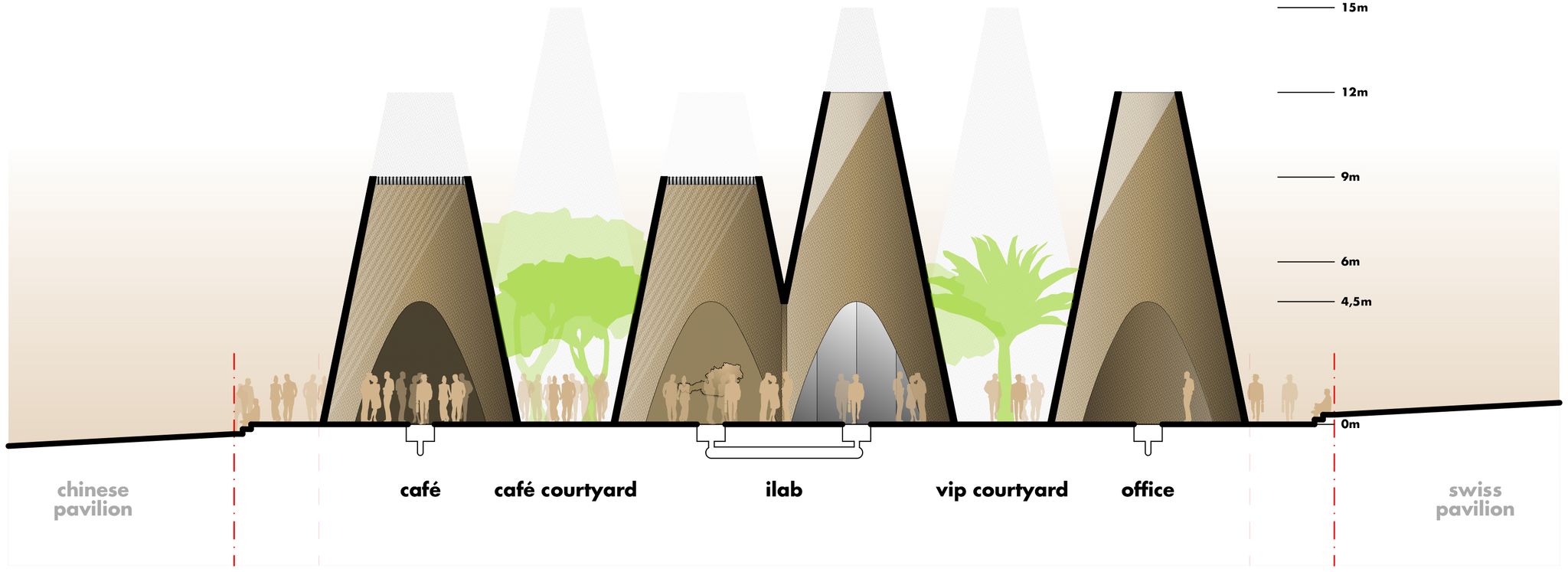 For the Austrian Pavilion in Dubai, the Querkraft team wanted to explore the “essential questions” for a common and better future. As the team explains, the pavilion poses an important question about the future and gives a possible answer: careful and respectful use of earthly resources. They set out to create a pavilion created through a network of 38 intersecting cones.
For the Austrian Pavilion in Dubai, the Querkraft team wanted to explore the “essential questions” for a common and better future. As the team explains, the pavilion poses an important question about the future and gives a possible answer: careful and respectful use of earthly resources. They set out to create a pavilion created through a network of 38 intersecting cones.
The dialogue between local building traditions and Austrian climate engineering is seen as an opportunity. It enables conventional air conditioning technology to be largely avoided, saving three quarters of the energy needed for a comparable building. In turn, the cone shapes develop an aesthetic between light and shadow that invites the visitor to linger and explore.
Restaurant of Metasequoia Grove
By GOA (Group of Architects), Suzhou, China
Jury & Popular Choice Winner, 10th Annual A+Awards, Restaurants (L > 1000 sq ft)

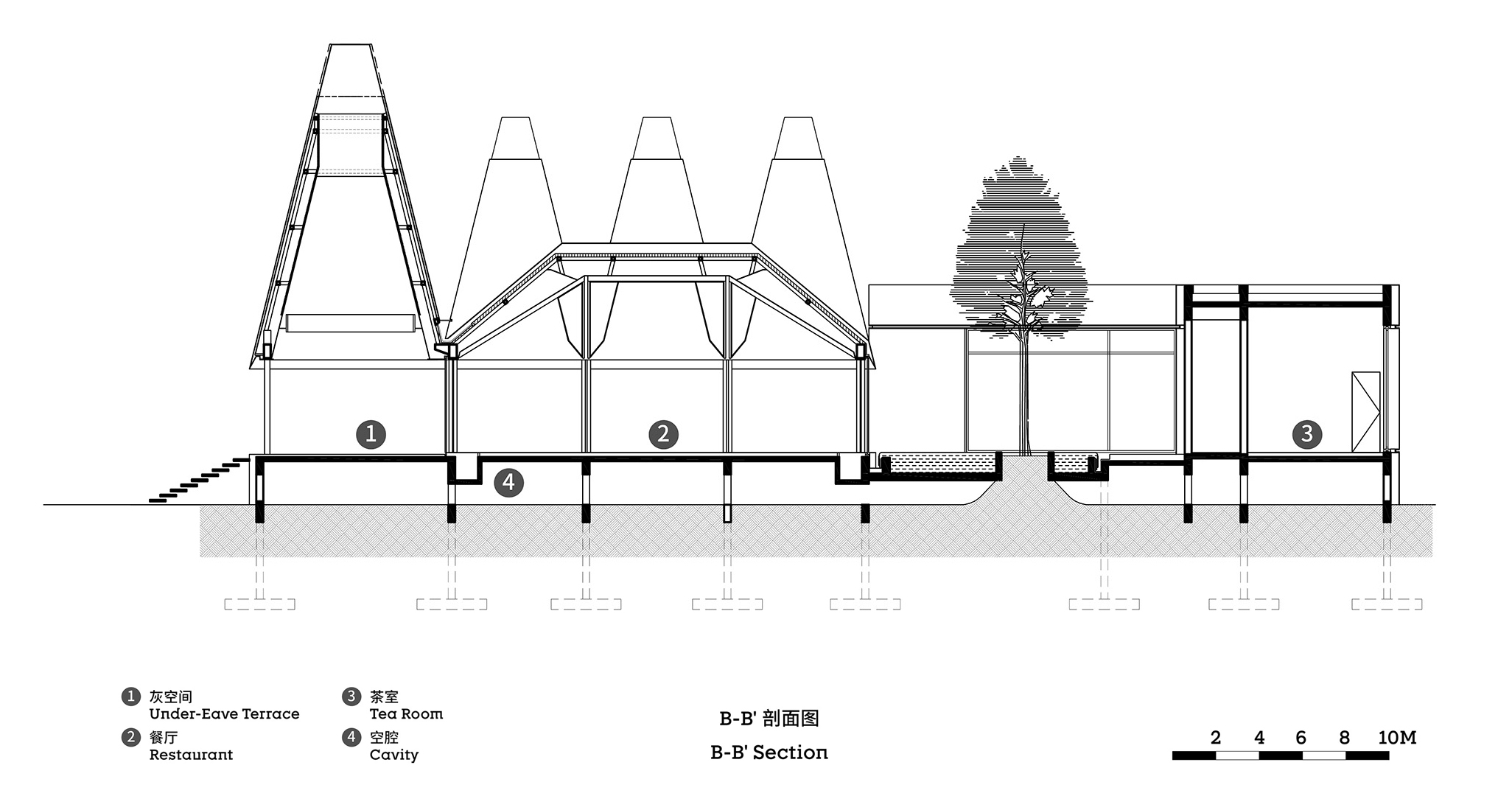 Located at the west end of Shanwan Village in the countryside of Suzhou, The Restaurant of Metasequoia Grove is on the vast swamp plain of Taihu. The restaurant functions as a dining space for visitors and a small banquet hall to hold various public events. Instead of being just an architectural construction, the project is more of a landscape that immerses into a joyful moment by the water.
Located at the west end of Shanwan Village in the countryside of Suzhou, The Restaurant of Metasequoia Grove is on the vast swamp plain of Taihu. The restaurant functions as a dining space for visitors and a small banquet hall to hold various public events. Instead of being just an architectural construction, the project is more of a landscape that immerses into a joyful moment by the water.
The forms of the metasequoia trees are abstracted and translated into a purely geometric architectural language, a pyramidal frustum that takes on a cone shape, and applied to the Restaurant of Metasequoia Grove as a featuring icon and a modular inspiration for the design. Three different scales of modules mix and cluster together, forming a continuous canopy structure that traces an artificial forest profile within nature.
The Mushroom
By ZJJZ Atelier, China
Jury Winner, 10th Annual A+Awards, Architecture +Joy
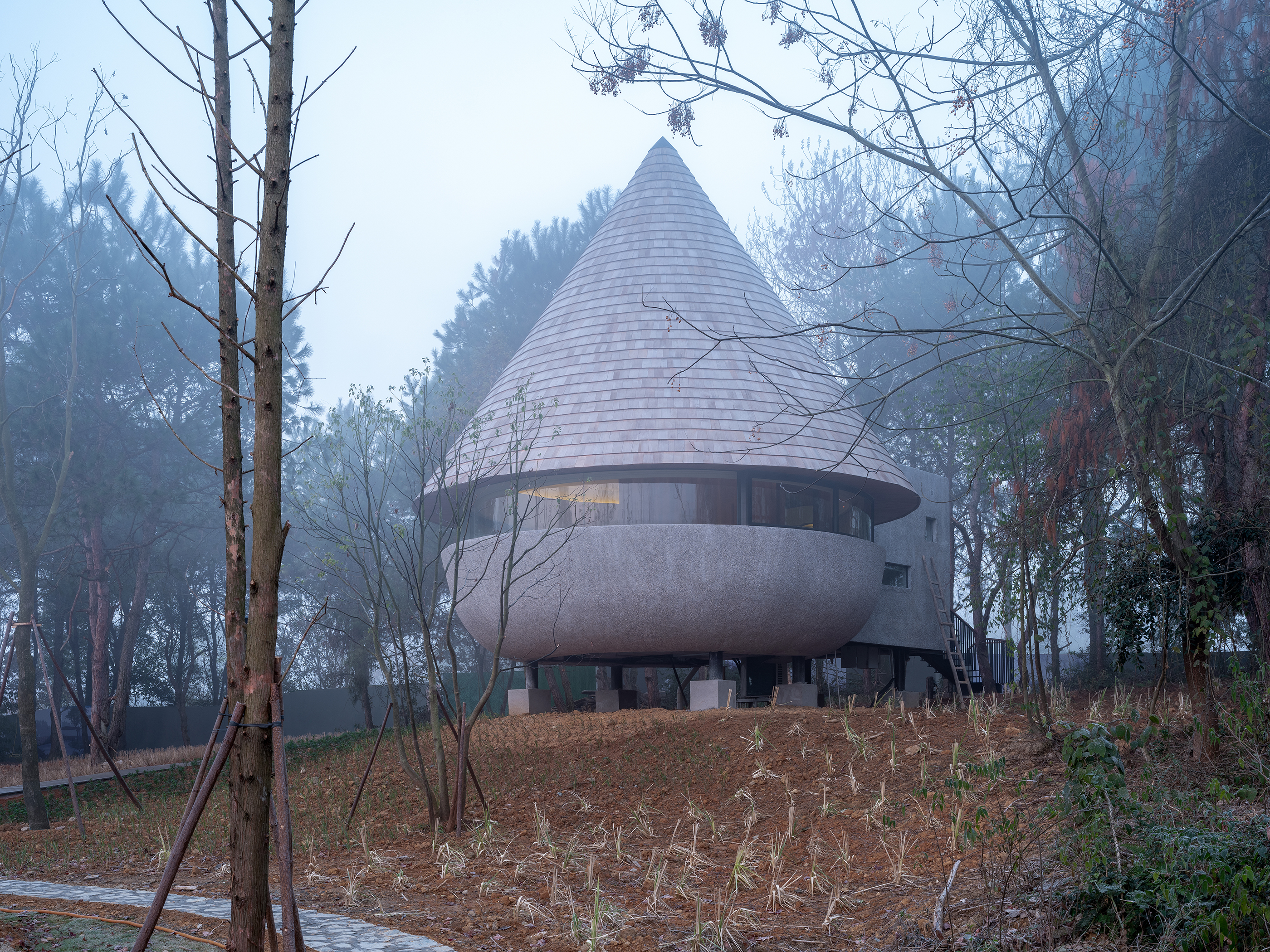
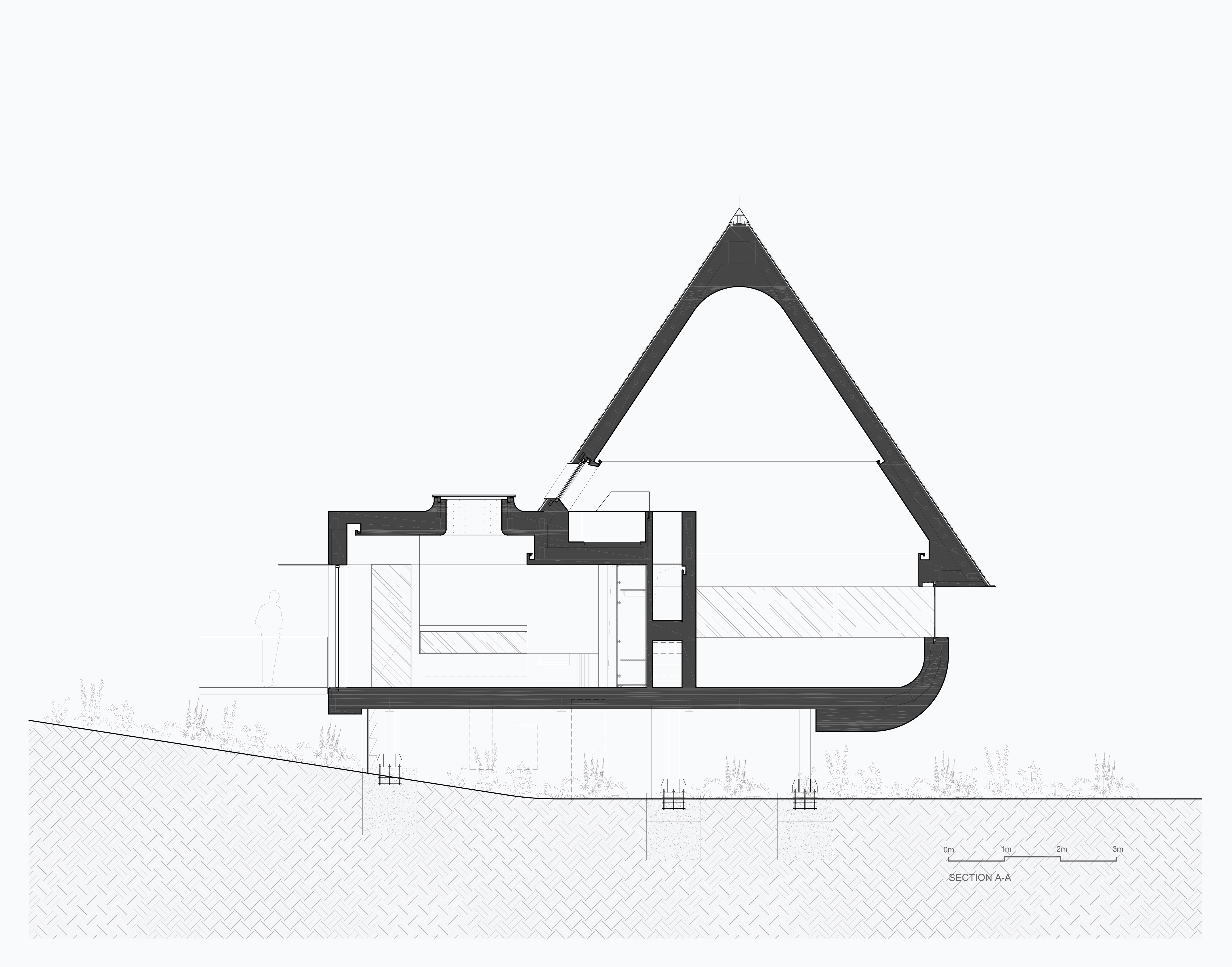 For The Mushroom house, the site borders on Fairy Lake, a well-known scenic locale. According to a 1600-year-old Chinese tale, a beautiful fairy and a young farmer once fell in love at this very lake. The client planned a surreal retreat that would allow the guests to escape, relax, and enjoy nature. The Mushroom is located in a pine forest, and the architectural form of the Mushroom is composed of two simple volumes.
For The Mushroom house, the site borders on Fairy Lake, a well-known scenic locale. According to a 1600-year-old Chinese tale, a beautiful fairy and a young farmer once fell in love at this very lake. The client planned a surreal retreat that would allow the guests to escape, relax, and enjoy nature. The Mushroom is located in a pine forest, and the architectural form of the Mushroom is composed of two simple volumes.
The main part of the mushroom is the guest room space, with a panoramic window set up near the viewing height. When sitting on chairs or leaning on the bed, the guests are immersed in the surrounding nature. The loft serves as a child area, linked by the small-scale stairs. The pure white cone-shaped roof is rounded on top, creating a sense of unbounded extension to the space.
Call for entries: The 14th Architizer A+Awards celebrates architecture's new era of craft. Apply for publication online and in print by submitting your projects before the Final Entry Deadline on January 30th!
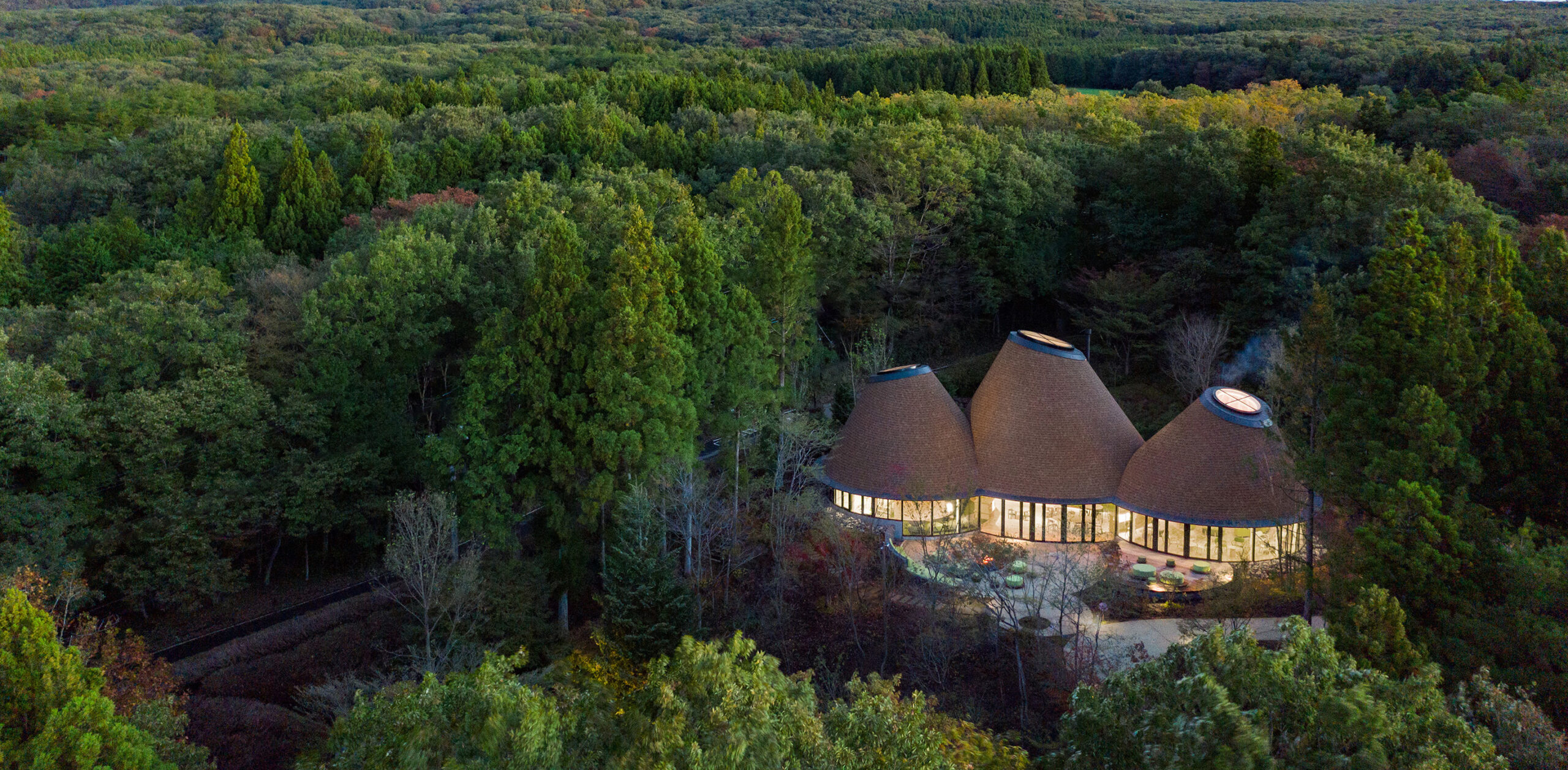
 Bumpers Oast
Bumpers Oast  Library Delft University of Technology
Library Delft University of Technology 